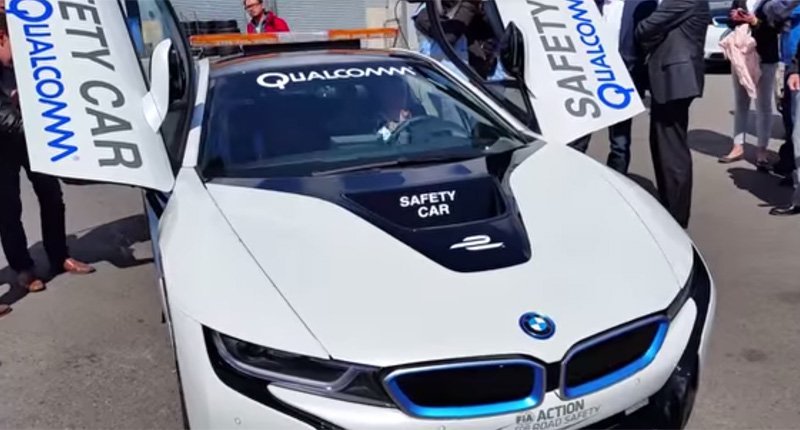Very few people keeping their eye on the upcoming Formula E racing series would have given much thought to what safety car the series would be using. The actual environmental impact sure, the drivers definitely but the safety car? Not so much.
Thing is, it’s very important though. It needs to be something that can go fast enough to lead a parade of high-performance vehicles, but it also needs to be, well, safe and maneuverable enough to get off the track as soon as an obstruction’s cleared. Perhaps most importantly though, it needs to suit the racing series.
No ad to show here.
It makes sense then that organisers of Formula E opted to go with a BMW i8. This isn’t just your run-of-the-mill i8 though. For one, it’s got a bunch of flashy lights on it (okay, that’s probably to be expected) and for another, it charges wirelessly.
Using Qualcomm’s Halo wireless charging technology, the i8 won’t need to plug in to top up its juice. That’s cool, but it’s also pretty vital given what the car will need to do. The Qualcomm Halo technology uses resonant magnetic induction to transfer energy between a ground-based pad and a charging pad fitted to the underside of the vehicle. The cars can then simply park over the base pad for charging to start automatically.
Supporting the i8 will be a another i8 and two i3s, which will function as extraction and medical cars. The cars will apparently be positioned at the end of the pitlane, charging wirelessly and ready to be rapidly deployed as required during each practice, qualifying and race.
The vehicles are still awaiting FIA approval and so far only one has been fitted with wireless charging capabilities.
The chosen safety car — which will be officially entitled the Qualcomm Safety Car — will be driven by experienced WTCC safety car driver Bruno Correia.
It’s also unclear whether Qualcomm hopes to include its wireless charging technology for Formula E racers in the near future.
